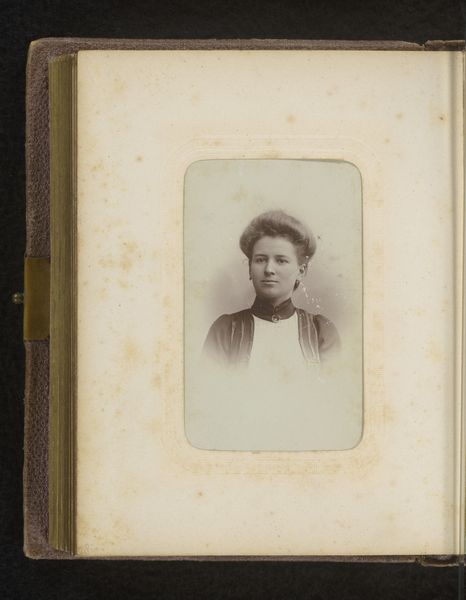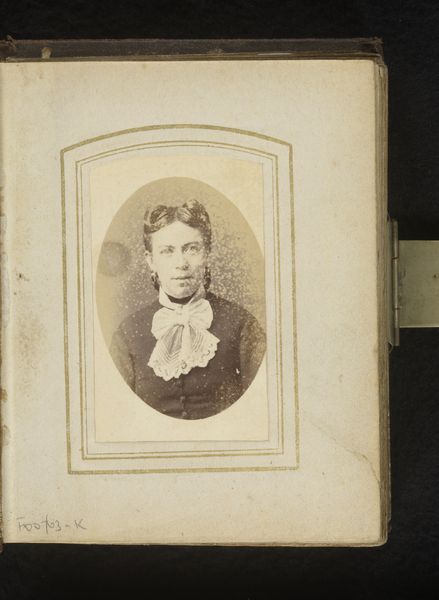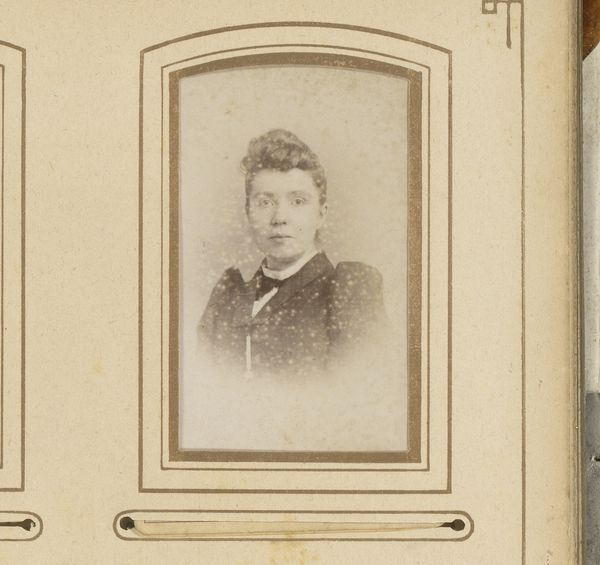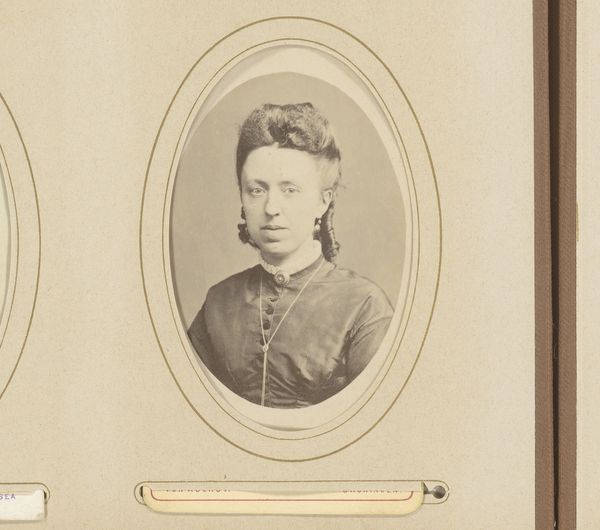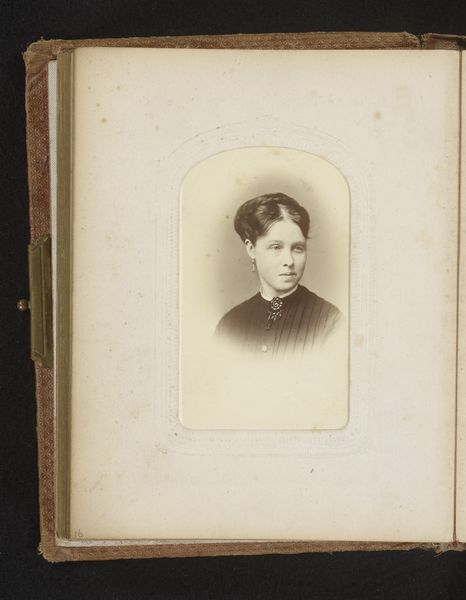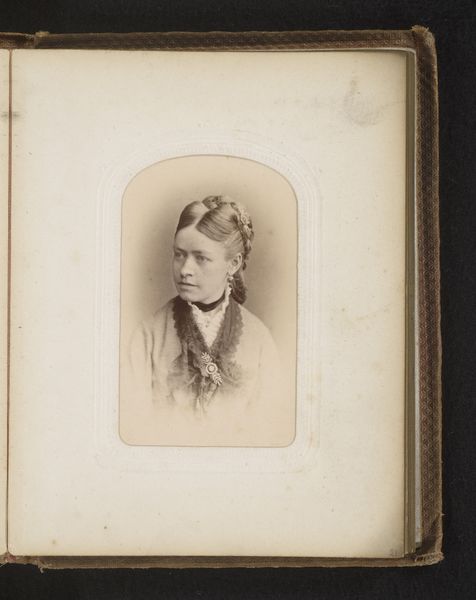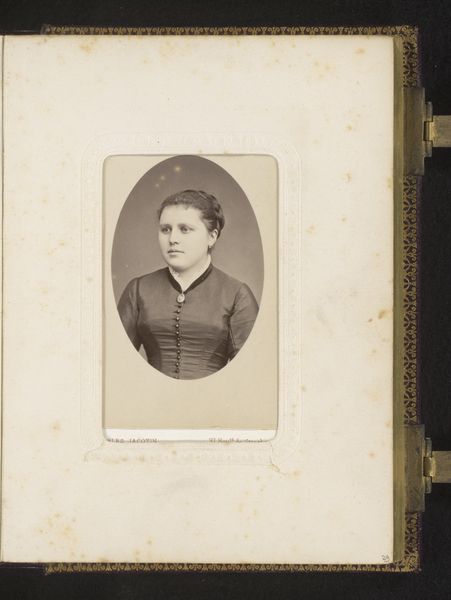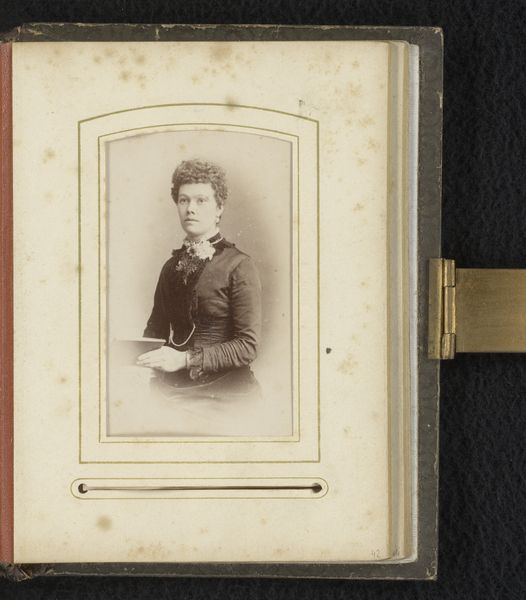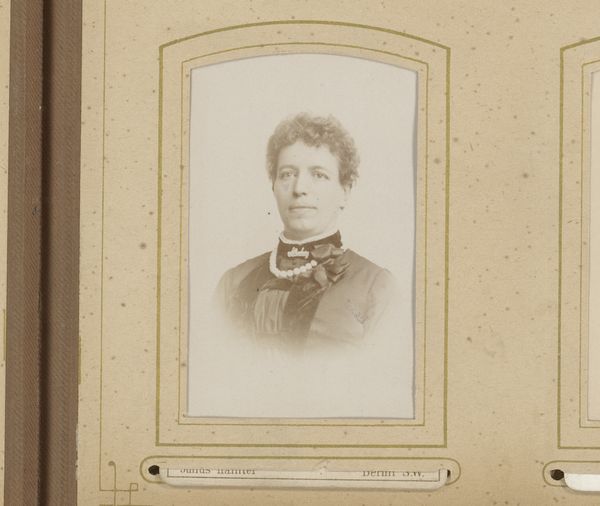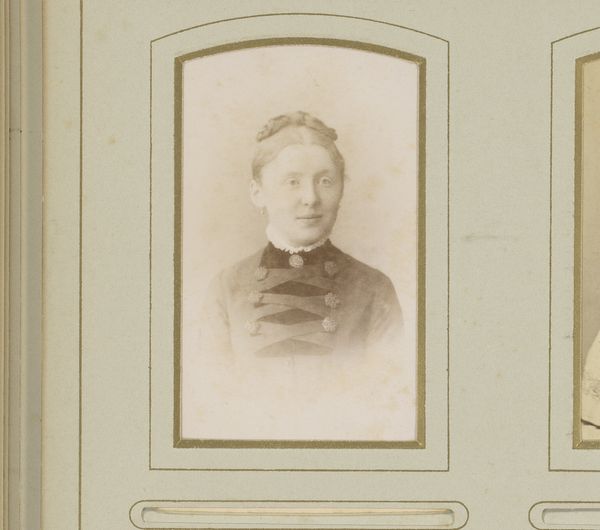
photography, gelatin-silver-print
#
portrait
#
antique
#
photography
#
gelatin-silver-print
#
19th century
Dimensions: height 83 mm, width 51 mm
Copyright: Rijks Museum: Open Domain
Curator: Standing before us is a gelatin silver print from between 1860 and 1900 entitled "Portret van een vrouw met halsketting," created by Herrmann Maas. The subject is, plainly, a woman depicted from the mid-torso upwards. Editor: It’s striking how contained the portrait feels—that small oval framing almost traps her. Her gaze feels… resigned, doesn’t it? Curator: Consider the framing device; its gentle curvature contrasts against the sitter's stoic presence. This deliberate use of form underscores a tension between societal expectations and individual expression, echoed in her controlled, though softly lit pose. Editor: Or maybe that’s all connected to societal expectations placed on women then—that stillness, that restriction. That necklace is probably something important, too, marking status, perhaps. The details feel deliberate. Who was she really? Curator: Precisely, consider the materiality itself, the gelatin silver print. Its tonal range captures subtleties, inviting us to dwell on the contrasts of light and shadow and the soft contours of the subject's face and elaborate neckline. The photographer shows control, but what does he mean to transmit? Editor: Those ruffles, all those little layers--so much fussy work in a world that often excluded women from work deemed meaningful. It feels significant to unpack this kind of historical object--and to let that complexity linger, instead of making easy assumptions. Curator: I agree. I find myself considering the geometry—the use of oval within square, and the soft blurring against sharper lines in the garments and jewelry. I read an intention, perhaps the subject of status vs individuality? The play with light here reveals something about the societal forces in play here. Editor: Ultimately, these portraits weren’t neutral records but carefully constructed images reinforcing a social order. They reveal more if we ask critical questions. It is important to be sensitive when it comes to viewing images of the past, understanding the implications in the social contexts they arise from. Curator: Agreed. By deconstructing elements such as line, shadow, and materiality, we reveal latent content beneath the surface; the true substance becomes clearer. Editor: Well, precisely. To reveal, to question, to reconsider – this is the beauty of viewing art through the lens of history and active interpretation.
Comments
No comments
Be the first to comment and join the conversation on the ultimate creative platform.
